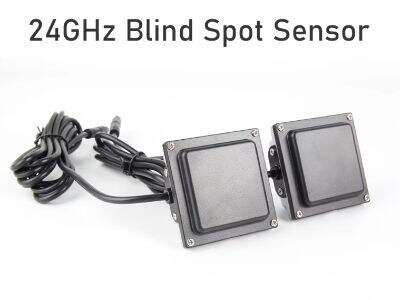If you are looking to upgrade your car and improve on safety, consider adding a blind spot monitor system. Some blind spot monitor systems will alert you if there is a car next to you that you may not notice. However, before you rush out and install a blind spot monitor system, there are some things to take into consideration.
Here’s how to select the right sensors for your blind spot monitor system.
There are various types of sensors provided, for example a radar sensor and an ultrasonic sensor. Radar work through radio waves and ultrasonic work through sound waves. The sensors that you select will depend on what your budget is, as well as how accurate you'd like the blind spot monitor system to be.
Knowledge of some of the limitations of a retrofit blind spot monitoring is also important.
A retrofit system is a device installed after a car has been built. That means the system may not be quite as seamless as if it were integrated into the car from the get-go. Retrofit systems might not provide as accurate a picture or not be compatible with other systems in your vehicle.
It’s also important to figure out the optimal location for sensor placement on your car.
The sensors have to be positioned in such a way that they will adequately sense vehicles in your blind spot without being blocked. Sensors are typically mounted to the side mirrors or rear bumper. A proper installation spot plays an important role in the accuracy of your blind spot system; therefore, please spend time to find the best position.
It is important to test and calibrate your blind spot monitor system to get the best performance of your investment.
After you have fitted the sensors the system will have to be test-driven to ensure that it works as it should. You may need to tune the sensors or calibrate the system to make certain it’s properly spotting vehicles in your blind spots. Testing and Calibrating on a regular basis can help keep your blind spot monitor system working properly for longer.
Installation should be considered in the context of compatibility with current vehicle systems as well.
While installing a blind spot monitor system, you have to ensure it is compatible with certain systems in your car like brake system or electronic control unit. Different systems can be incompatible, resulting in malfunctions and poor performance. Make sure the blind spot monitor system is installed properly and compatible with your car’s existing system by professional installer.
Finally, a blind spot monitor for your car can go a long way in keeping the driving conditions safe.
But there are some issues to think about before adding a blind spot monitor. Selecting the correct sensors, being aware of the constraints of a retrofit system, carefully placing the sensors where they are most effective, testing and calibrating the system, and choosing a solution that is compatible with the on board systems all make certain that you get the most out your blind spot monitor system and improve your driving experience.
Table of Contents
- Here’s how to select the right sensors for your blind spot monitor system.
- Knowledge of some of the limitations of a retrofit blind spot monitoring is also important.
- It’s also important to figure out the optimal location for sensor placement on your car.
- It is important to test and calibrate your blind spot monitor system to get the best performance of your investment.
- Installation should be considered in the context of compatibility with current vehicle systems as well.
- Finally, a blind spot monitor for your car can go a long way in keeping the driving conditions safe.

 EN
EN
 AR
AR
 HR
HR
 CS
CS
 DA
DA
 NL
NL
 FI
FI
 FR
FR
 DE
DE
 EL
EL
 IT
IT
 JA
JA
 KO
KO
 NO
NO
 PL
PL
 PT
PT
 RO
RO
 RU
RU
 ES
ES
 SV
SV
 IW
IW
 ID
ID
 LV
LV
 LT
LT
 SR
SR
 SK
SK
 SL
SL
 UK
UK
 SQ
SQ
 ET
ET
 HU
HU
 TH
TH
 TR
TR
 FA
FA
 AF
AF
 MK
MK
 KA
KA
 UR
UR
 BN
BN
